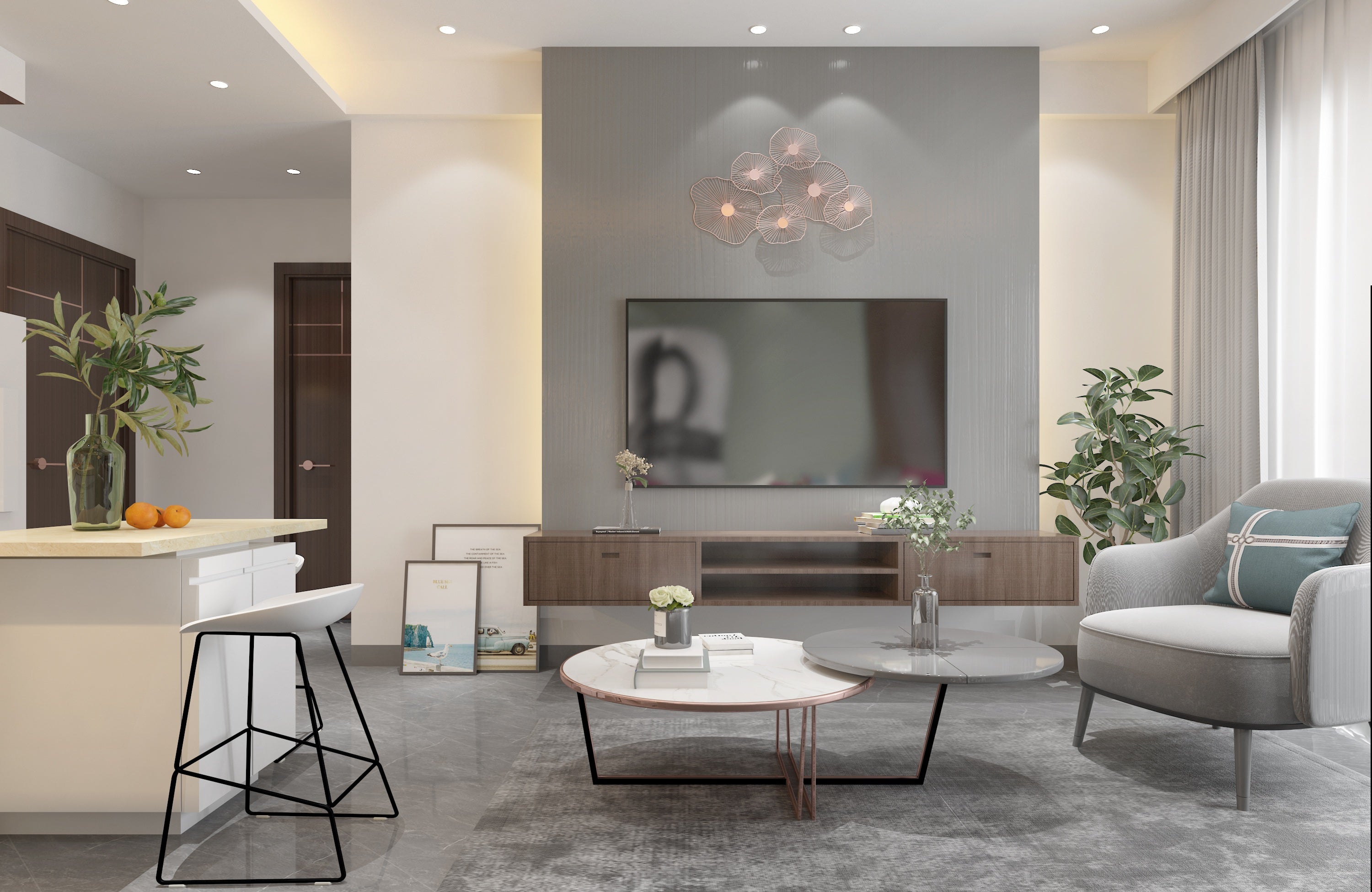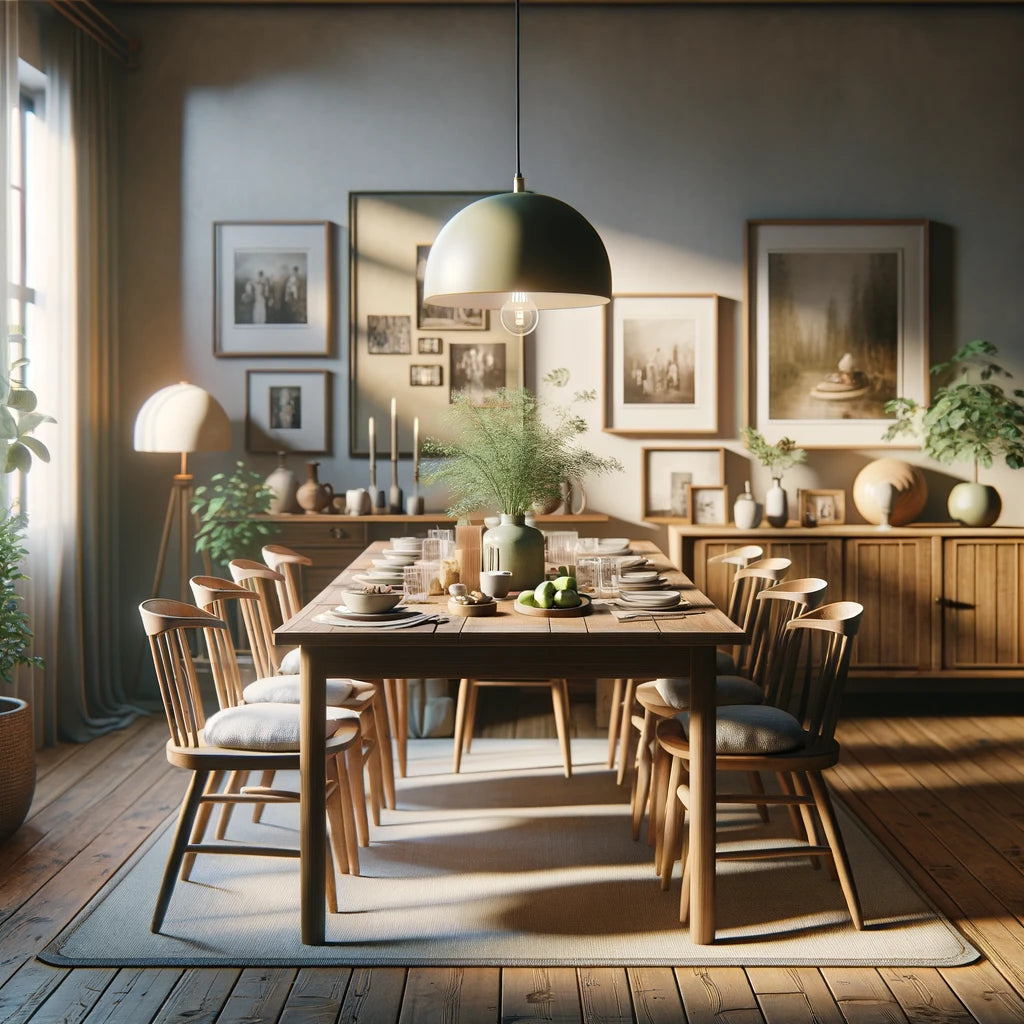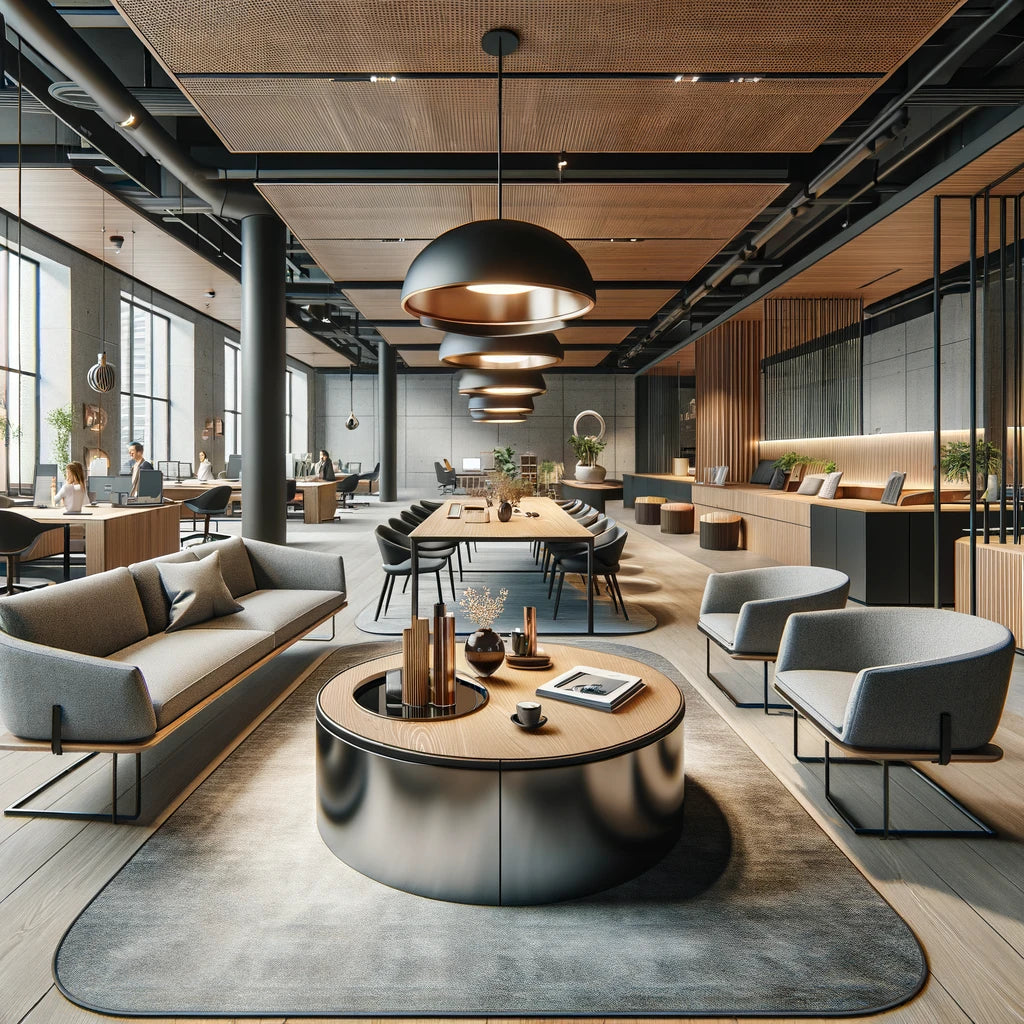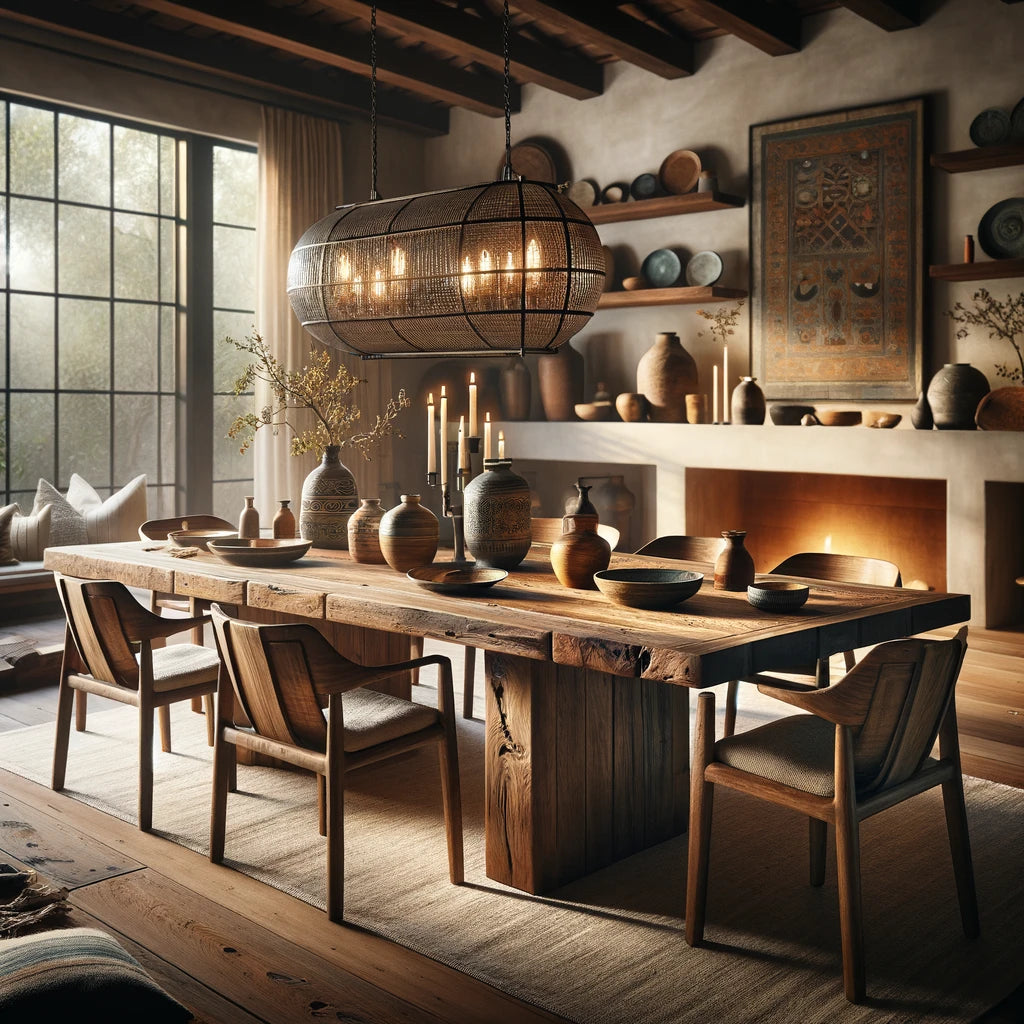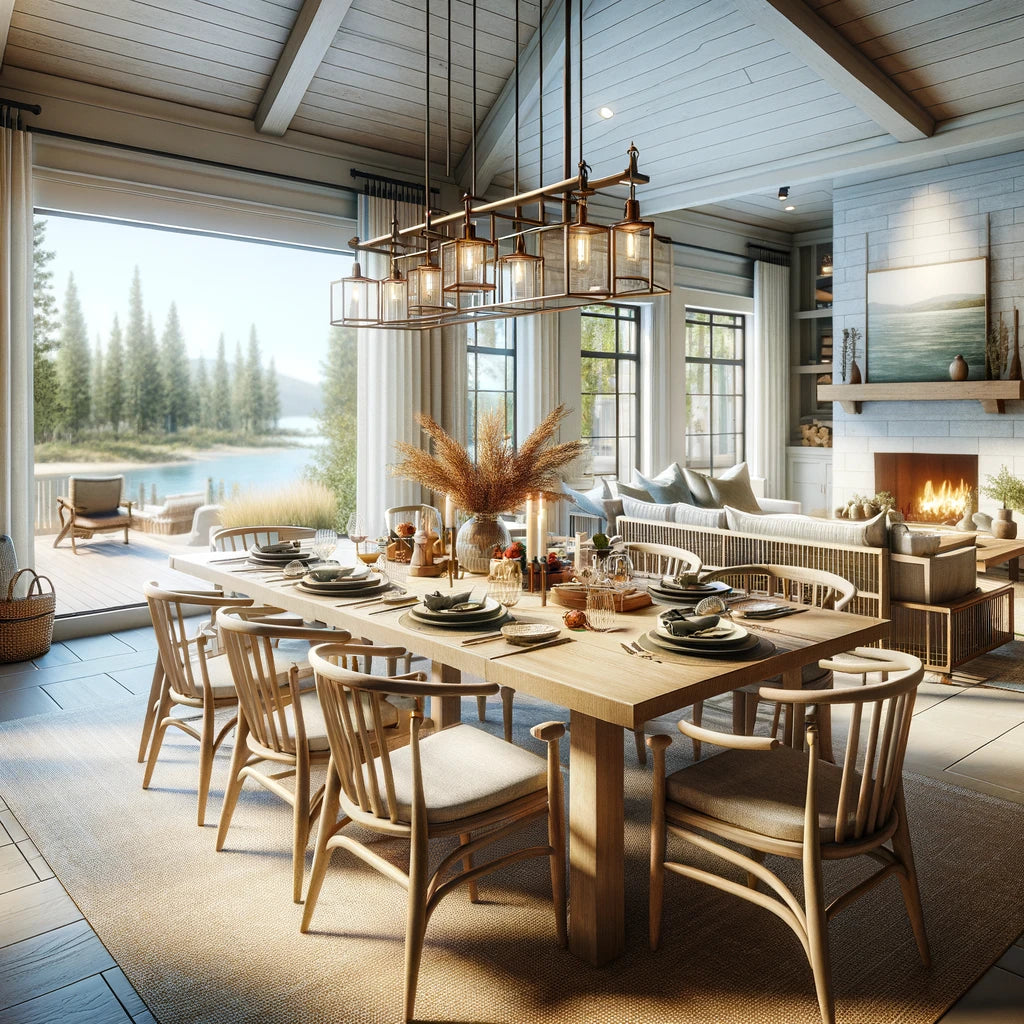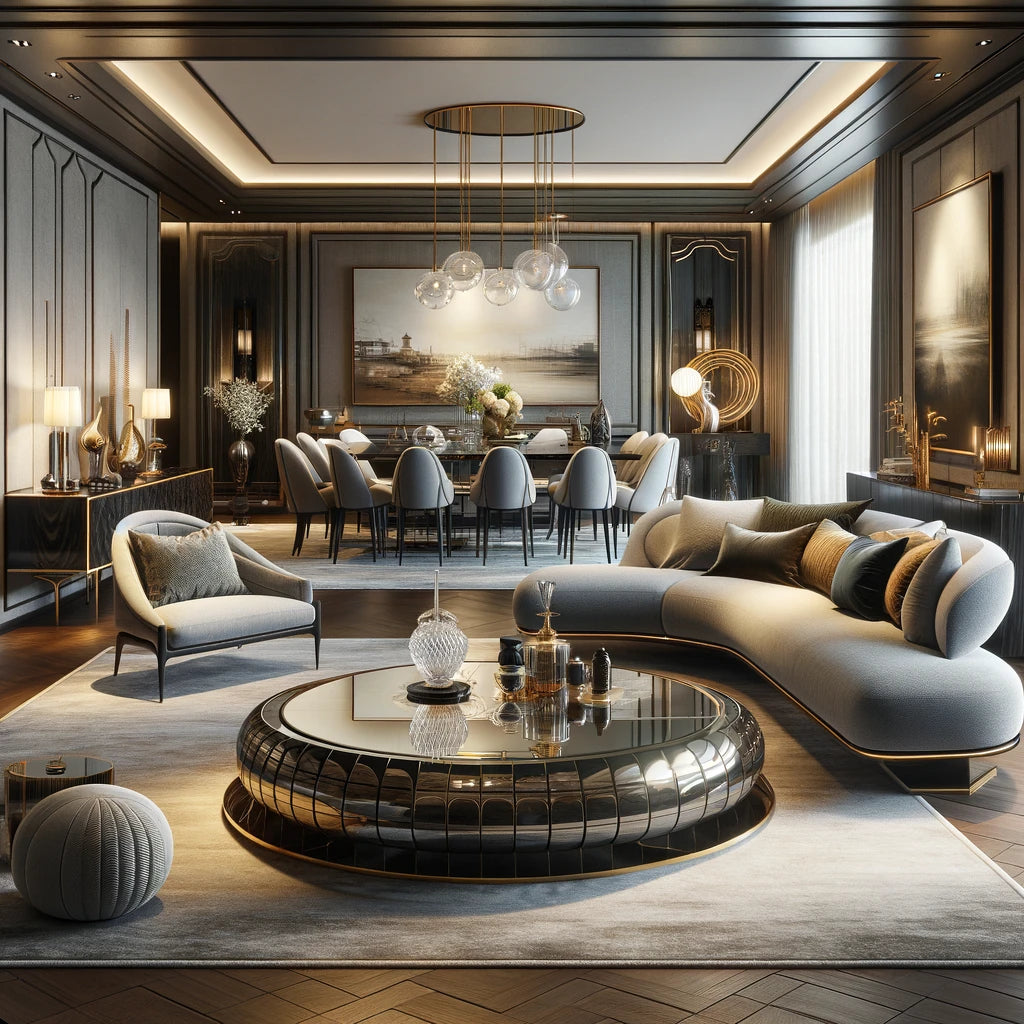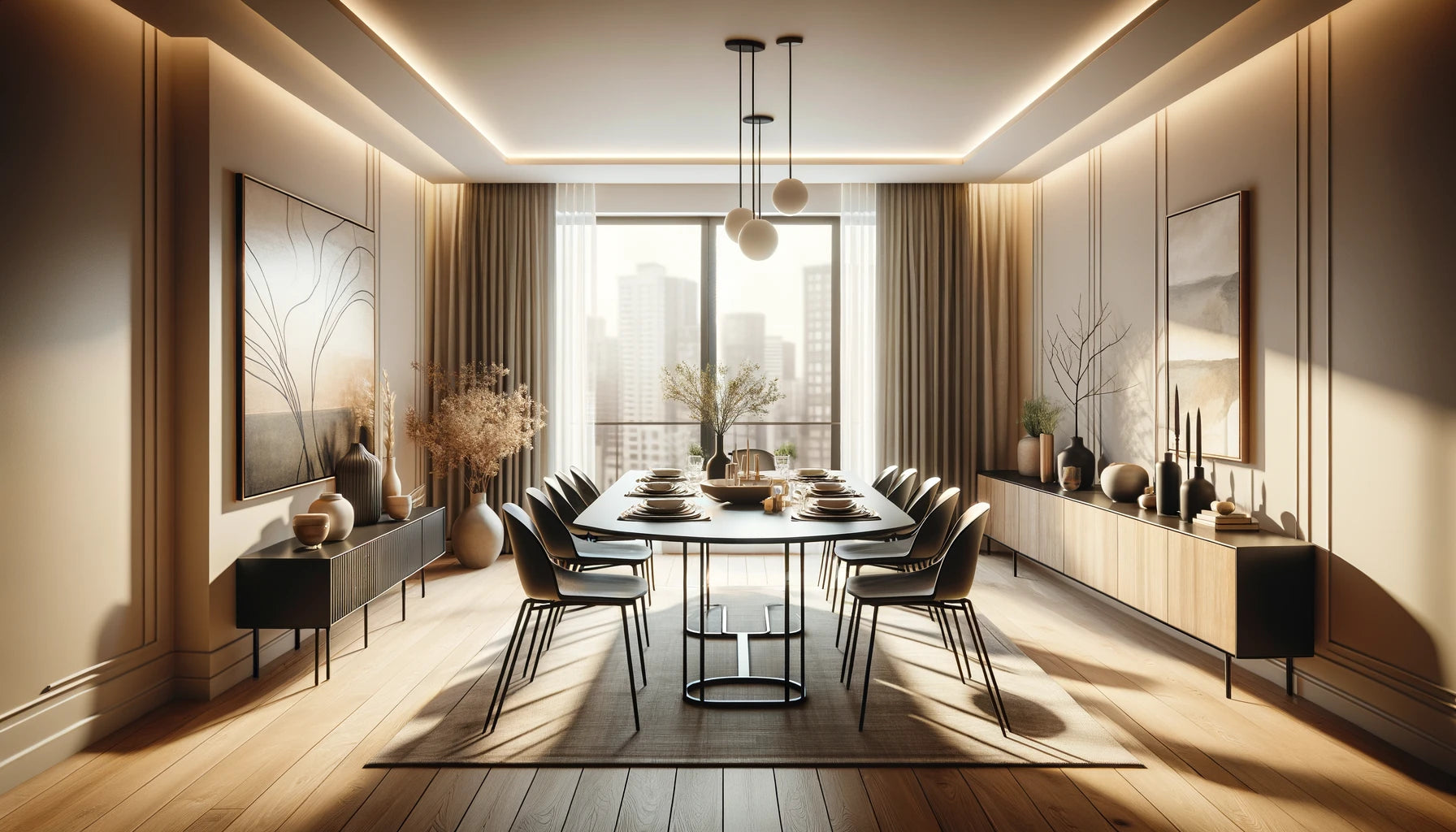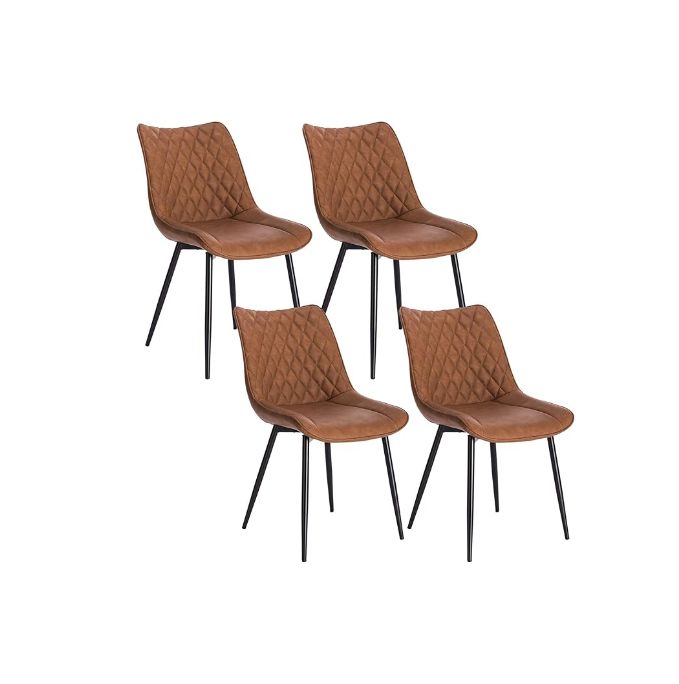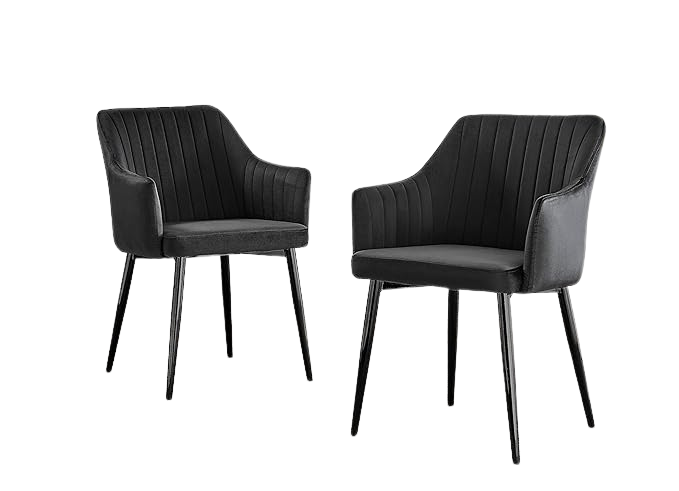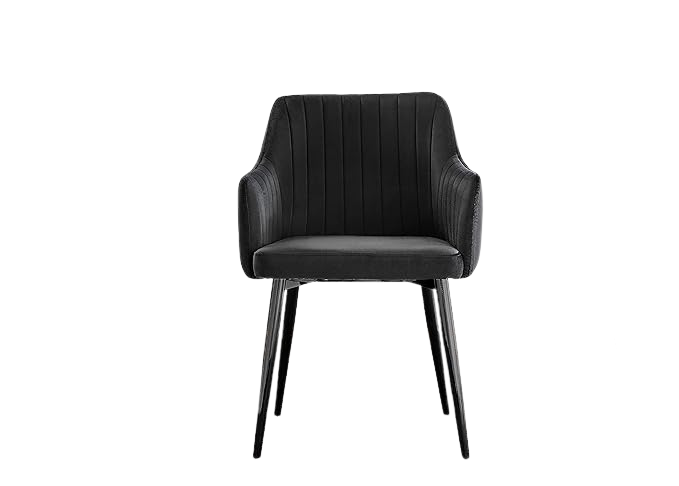Choosing furniture for a living space is akin to picking the cast for a play; every piece needs to not only look the part but also perform its role with excellence.
The seamless blend of form and function in furniture selection is the cornerstone of any well-designed space. It's a delicate balancing act where each item should be both a feast for the eyes and a testament to utility.
Understanding Space: The Blueprint of Selection
Selecting the right furniture for a space extends beyond the allure of its appearance or the depth of one's affection for a particular style.
It's a strategic exercise in space planning. Measuring the area is the preliminary step—akin to an artist first stretching the canvas before a brushstroke is laid. But the true artistry emerges when one begins to consider the space in three dimensions, taking into account not just the length and width, but also the height of the room. Vaulted ceilings may invite taller furniture, while low ceilings might call for lower profiles to maintain a sense of openness.
Envisioning traffic flow is equally important. Each piece of furniture should enhance the room's functionality, not hinder it. A room is a living, breathing space, where daily rituals unfold, and each piece must support this fluidity of life. Furniture placement is a thoughtful choreography that navigates the delicate balance between aesthetic appeal and functional ease. For example, a chest of drawers placed in a narrow hallway must be proportional to ensure easy passage; likewise, a bed should be positioned not just to present a visual anchor but also to allow for unimpeded access to both sides, if possible.
The dynamic of the room also extends to the invisible lines of sight. When entering a room, where does the eye naturally travel? Furniture can be used to accentuate focal points, like a fireplace or a grand window, but it should never obstruct a pleasing view or the natural pathways of gaze and light. These lines also guide the interplay between various pieces of furniture. A coffee table should be within reach of the seating around it, creating a functional gathering point without impeding movement.

Consider, too, the purpose of the room. Furniture in a home office may prioritise storage and surface area for working, while a living room might require more seating and tables for entertaining. The function dictates form, and in a well-designed space, the furniture echoes the activities that take place there. For instance, dining room chairs might need to accommodate longer periods of sitting, so comfort becomes a priority, whereas accent chairs in a foyer might be more about visual appeal and less about extended use.
When understanding space, one must also think vertically. Tall bookcases and shelves can draw the eye upward, making a room feel larger, but they need to align with the room’s scale and not overwhelm it. Lighting fixtures, too, can play a role in this vertical dance, with floor lamps or pendant lights becoming part of the room's three-dimensional landscape.
Finally, the space must be adaptable. Furniture on casters, modular pieces that can be reconfigured, and folding elements all cater to the evolving needs of a space. A room may need to transition from a play area during the day to an adult space in the evening, or from a solitary workspace to a collaborative environment.
Multi-functional Furniture: The Chameleons of Design
In the realm of interior design, multi-functional furniture stands as a testament to human ingenuity, serving as a bulwark against the constraints of limited square footage.
The ability of a single item to assume various forms and functions is a marvel that resonates deeply with the contemporary dweller's spirit. The cleverness of a wall-mounted table that folds away after the morning hustle, a bed that retreats into a sleek cabinet, or a desk that extends into a full dining surface embodies a fluidity that is invaluable in today's urban habitats.
These chameleons of design offer a symphony of solutions for the modern lifestyle, where the lines between work, leisure, and rest are increasingly blurred. A coffee table that elevates to laptop height becomes a workspace; a bookshelf slides or folds out into a desk, creating an impromptu home office. The duality of such pieces allows for a seamless transition between the day's various acts—work, play, and relaxation—without the need for additional square footage.
Furthering this transformative spirit are the sleeping quarters, where space-saving is often most needed. Loft beds with desks or seating areas underneath capitalise on vertical space, offering a layered approach to room functionality. Bunk beds with staircases that double as drawers can transform a child’s bedroom into a playroom, study, and dream space, all without occupying an extra inch of precious floor space.

The design of these pieces also speaks to an aesthetic flexibility. The modern multi-functional piece doesn't sacrifice form for the sake of function. With clean lines, subtle transitions, and finishes that complement a wide array of decor styles, these furnishings can stand proudly in the spotlight or blend seamlessly into the background. They are as much a statement of style as they are a declaration of practicality.
In communal areas like the living room, the magic of modular sofas comes to life, with sections that rearrange to form everything from a cosy loveseat to an expansive sectional fit for large gatherings. In smaller homes, such ingenuity is not just welcome but essential, as the living room may also function as a dining area, a study, or a home theatre.
The kitchen and dining areas also reap the benefits of multi-functional design. Bar stools that adjust in height can move from the counter to the bar, offering flexible seating options. Kitchen islands on wheels with built-in cabinets can serve as mobile prep stations, dining tables, or storage hubs, adapting to the needs of the moment.
Even the often-overlooked aspects of furniture can offer dual benefits. Beds with drawers utilise the unused space beneath the mattress, turning it into a place to stow away linens or off-season clothing. Headboards with built-in shelving can eliminate the need for nightstands, freeing up floor space while keeping essentials within arm's reach.
The chameleon-like quality of multi-functional furniture not only caters to space-saving needs but also to the evolving demands of sustainability. By reducing the need to purchase multiple pieces, these designs implicitly support a more eco-friendly lifestyle. They champion the concept of "less is more," emphasising a reduction in material consumption and a mindful approach to living.
An additional look inside the MUJI Plain House.
— MUJI USA (@mujiusa) January 14, 2020
Designed without any dividers or separators, the layout can be easily changed according to lifestyle.The space can be multi-functional through its furniture, instead of assigning a role to each room. #muji #mujiplainhouse pic.twitter.com/fGZIUHBGnz
Material Matters: Choosing with Care
The dialogue between function and form continues unabated in the realm of material selection for furniture.
Each material brings with it an intrinsic set of characteristics that dictate its lifespan, care, and aesthetic impact. When it comes to upholstered furniture, for instance, fabric choices can determine not only how a piece will look but also how it will endure the test of daily life. A sofa clad in sumptuous velvet may exude luxury, yet it demands attention to avoid spills and stains. Conversely, synthetic fibres may lack that opulent touch but offer resilience against the wear and tear of a busy household.
The texture and finish of a material also play a crucial role in setting the tone of a space. Leather, with its rich patina that deepens over time, can suggest sophistication and is relatively easy to clean, yet it might not be the best choice for a sunny conservatory where direct sunlight can cause it to fade and crack. Metals, too, come with their own set of considerations; stainless steel offers a modern sheen and is rust-resistant, making it ideal for kitchen stools or tables, while wrought iron brings a classical or industrial aesthetic but might require treatments to prevent corrosion.
When selecting wood furniture, the spectrum ranges from the hardness of oak or teak, which can endure heavy use, to the softer pines that might suffer under the strain of heavy objects. Furthermore, the choice between a solid wood piece and veneer-clad composite can impact not only cost but also the piece's ability to withstand humidity and temperature changes.

Sustainability is another vital factor in the material selection process. Bamboo and reclaimed wood are gaining popularity for their eco-friendly properties, offering a sustainable yet stylish option for environmentally conscious consumers. Additionally, innovations in recycled plastics and eco-friendly composites present new opportunities for those looking to make ethical choices without compromising on style.
Care and maintenance should also inform material choices. Stone tabletops, like granite or marble, offer a durable and heat-resistant surface for dining but can require regular sealing to prevent stains. In contrast, laminate surfaces can mimic the look of natural stone or wood without the need for intensive upkeep, although they may lack the same level of heat resistance and longevity.
Material selection also extends to the finer details that complete a piece of furniture. Hardware like drawer pulls and knobs, often considered the jewellery of furniture, can be crafted from a range of materials, each with its own impact on overall design. Brushed nickel hardware might add a sleek, modern touch, while ceramic or glass knobs can introduce a quaint, vintage aesthetic.
The considerations are manifold, and the choice of materials will inevitably influence the lifecycle of a piece of furniture. Each selection is a balance between practicality and visual appeal, between immediate gratification and long-term satisfaction. Understanding the nuanced language of materials allows for informed decisions that resonate with the rhythms of daily life and the spaces we inhabit.
a home and the intriguing visuals of a #contemporary #art gallery by layering #modern, comfortable #furniture with abstract art and accessories. Both styles are tied together by #luxurious materials such as marble, wood, and brass that comprise the largest surfaces of each room. pic.twitter.com/rteipYScTU
— Design Stunning (@DesignStunning) November 1, 2023
Comfort is Key: The Trial of the Senses
Comfort serves as the ultimate benchmark for the success of furniture selection.
Aesthetic appeal may invite us to enter a room, but it is the physical comfort that encourages us to stay. Consider the living room, a space where life unfolds, from family gatherings to moments of solitary repose. Here, a sofa is not just a statement piece but a vessel of comfort, a cradle for relaxation. It must cushion the body delicately, support the back faithfully, and welcome all who perch upon it with a gentle embrace.
The ergonomics of a piece—a chair's lumbar support, the height of a dining table, the depth of a sofa—are not mere technical details; they are the defining factors that determine whether a piece of furniture enhances your life or becomes a source of discomfort. The curvature of an armrest, the resilience of a cushion, the give of a seat; these are the subtle yet critical elements that can uplift the everyday experience of sitting, working, or dining.

To evaluate comfort, one must engage in a sensory trial. When testing a chair, for instance, one should note whether the feet rest comfortably on the floor, if the knees are at a natural angle, and if the spine feels supported. The material of the upholstery contributes to this sensory experience as well—leather may feel cool and sleek, while fabric might offer warmth and a gentle caress against the skin.
In bedrooms, the sanctuaries of rest, the trial of comfort extends to beds and mattresses. A bed frame that creaks with every movement can disrupt the tranquillity of sleep, while a mattress that is too firm or too soft can be the culprit behind a restless night. It is important to remember that comfort is subjective; a mattress that supports one person’s sleep perfectly may be another's nemesis. Therefore, personal testing, sometimes even a trial period offered by many mattress companies, becomes a key step in making an informed choice.
Moreover, the comfort of furniture is not static; it is a dynamic quality that should endure over time. A recliner’s mechanism should operate smoothly after countless uses, and seat cushions should resist sagging long after they have been purchased. The longevity of comfort is a testament to the quality of a furniture piece and should be considered alongside immediate comfort.
Style Cohesion: The Art of the Ensemble
The furniture in a room doesn't need to match, but it does need to converse.
Mixing and matching bring dynamism and personality to a space, but the dialogue between pieces should be harmonious. To achieve cohesion without falling into a "matchy-matchy" trap, consider sticking to a defined colour palette or a specific design era that ties disparate pieces together. Balance and proportion in the furniture selections can help different styles coexist beautifully. A vintage armchair can sit next to a modern sofa if they share a common colour or texture, linking them visually.
The interplay between aesthetics and functionality in furniture selection is not just about individual preferences—it’s about creating a living space that resonates with the lives lived within its confines. Furniture that wins on both counts is furniture that adds value to daily life, providing both comfort and a canvas for self-expression.

Concluding Remarks
In the end, the process of selecting furniture should be a thoughtful one. It’s a series of decisions where one considers the spatial ballet of movement within rooms, the versatility of pieces in accommodating life’s flux, the pragmatism of materials, the non-negotiable demand for comfort, and the harmonious symphony of style. When aesthetics and functionality are given equal billing, the result is a home that not only looks spectacular but feels wonderfully livable.

